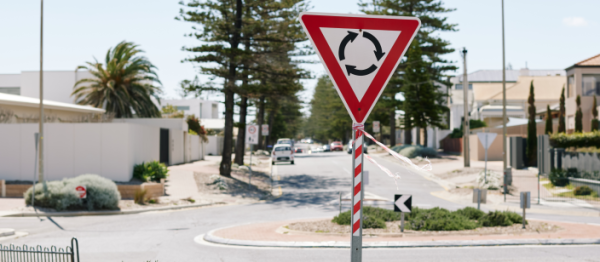This article was originally published in October 2020 and has been updated.
Share this story:
Want to protect your car from the elements? When it comes to car covers, not all are created equal. Find out what the NRMA Insurance Research Centre has discovered about hail covers to help you get prepared.
Hailstorms are usually short-lived, but they can appear with little warning and leave a lasting impact. The size and volume of hail can vary from tiny pellets to chunks the size of a golf ball, which can do serious damage to a vehicle. If you’ve ever seen a car that’s been pelted with hail, it can go from showroom condition to looking like the surface of the moon in just minutes.
Obviously, while the best way to avoid hail damage is to keep your car in a garage or carport, not everyone has access to one, so it’s a good idea to have a predetermined spot you can park, such as a friend’s house or a workplace. However, if you’re out and about, or you have no other option for sheltering your car, a hail cover could be helpful.
That’s where our team at the NRMA Insurance Research Centre comes in. They test products such as emerging mobility technologies and other innovations that help improve vehicle damage resistance, repairability, security, and safety. The Centre recently began an investigation into hail covers, also known as hail blankets. The objective was to replicate a consumer’s journey, to see what’s available online and in stores at various price points. Now we can share their findings and some very helpful tips if you’re looking at investing in a hail cover.
James Thomson from the NRMA Research Centre who conducted the initial research describes the process in a nutshell: “We wanted to replicate a regular car owner’s attempts to find what kind of products are available for hail impact protection for passenger vehicles.”
As most of us do, James started online, searching keywords including ‘hail blanket’, ‘car hail blanket’ and ‘car cover hail’. Returned hits were then followed up to specific sellers and marketplaces.
Products matching the keywords were found on Australian automotive stores Autobarn, AutoPro, Supercheap Auto and Repco. Researchers also found some on online marketplaces Amazon, eBay and MyDeal. What quickly became clear was the wide disparity in quality and price, with some products priced up to $1600 found on Amazon and some Australian e-tailers. Encouragingly, there were more affordable options from some Australian e-tailers such as www.carcoversandshelters.com.au, and researchers also found one that’s Australian made at www.coverworld.com.au.
The more expensive options have not been thoroughly researched for this piece as their price made them prohibitive and consequently were not considered a product an everyday vehicle owner would purchase.
After further investigation of covers to test down the track, James placed his test hail covers of choice into two distinct categories of usefulness and quality, calling them 'Type A' and 'Type B'. (At this stage, it is assumed that these types of products may provide a level of damage reduction or protection from hail impact, depending on the conditions, but are yet to be tested).
Type A were higher quality products, ranging from $160-$330 in price and with the defining characteristic of being a 'sandwich' type construction. That is, they were built like a regular form-fitting car cover but had a layer of manufactured foam material in between, with the explicit purpose of stopping or preventing damage from hail stone impacts.
Type B were cheaper and lower quality products which appeared to just be regular dust or rain car covers with no sandwiched material. Some of them were little more than plastic sheeting equivalent to the quality of a garbage bag. (These are not expected to prevent any damage during testing).
Here are some of the other helpful points learned during the process:
Hail covers are tailored, so be sure to measure your vehicle length, width and height and match it to the product description. Better quality covers have various systems to secure the cover to a vehicle. Some use straps with clips that go under the vehicle, others through the wheels.
Putting a hail cover on a vehicle gets easier with practice. It’s worth familiarising yourself with the cover and practice putting it on a few times so you can do it more efficiently when time is of the essence.
“Application of a small cover in our workshop took one person 3-4 minutes,” says James. “This is notably with no wind, which we anticipate would make the application harder. We recommend you allow 8-10 minutes in windy conditions.”
Covers are generally tailored, especially those from the higher-quality Type A group, with a 'front' and a 'rear' so make sure it is orientated correctly. Having two sets of hands makes putting a cover on easier, but it is possible with just one. The larger covers for 4WDs or large SUVs may need two people and access to a ladder. Also, it’s important to be mindful of ladder safety, especially if you’re feeling rushed in the lead-up to a storm.
Hail covers can be bulky even when folded, like the size of a large couch cushion or two, so be aware of the space they will take up when stored. Of the covers our researchers looked at, Type A covers came in zip-up storage bags. Type B did not – they came in either a plastic slip case or a draw-string bag. Covers need to be dried after use or they will go mouldy.
If you suspect a storm is coming, the best advice is to watch the weather. Check your weather apps, listen to the news, follow the Bureau of Meteorology (BOM) and prepare. If it does start to hail while you’re attempting to cover your car, abandon the process and seek shelter. Heavy hail can cause serious injury or worse, and no car is worth risking your safety.
If your car is damaged in a hailstorm and you need to make a claim, NRMA Insurance has many kinds of emergency support to offer you. Visit our car insurance claims page for helpful information on how to get started.
All content on the NRMA Insurance Blog is intended to be general in nature and does not constitute and is not intended to be professional advice.


